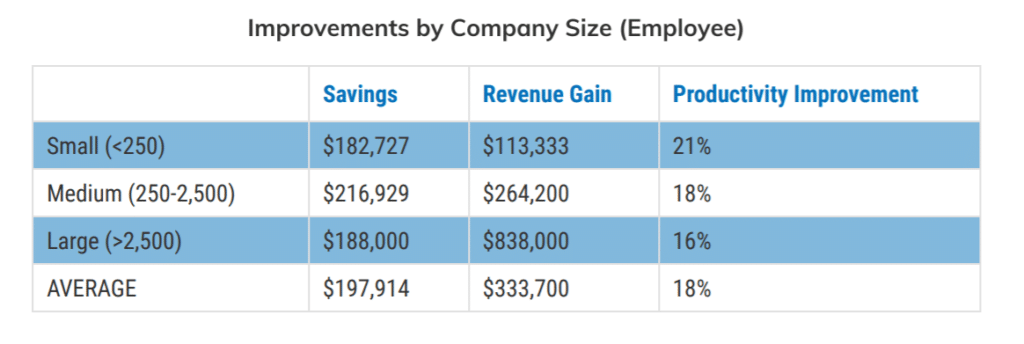The pandemic has pressed businesses from all sides, unleashing a host of new immediate and long-term challenges—some existential. From maintaining business operations remotely to developing long-term continuity strategies, enterprises are laser-focused on recovering as quickly as possible.
For CFOs, however, the rapid and unprecedented changes of 2020 have created what may seem like an impossible challenge: meeting the needs of a workforce that looks nothing like it before the pandemic. It’s kind of like building an airplane—while flying it at the same time.
With 80% of CFOs reporting a decrease in revenues and/or profits amid the pandemic, it should come as no surprise that cost savings are a major priority for most finance executives.
And with savings averaging $197,914 across businesses of all sizes, and revenue gains as high as $838,000, unified communications can play a major part in an organization’s post-COVID-19 future.
Supporting the new normal
One of the biggest changes we’ve seen this year was the rapid adoption of work from home policies—and the figures are nothing short of staggering. According to data from Nemertes Research, the percentage of employees working from home more than doubled during the pandemic.
Today, 91% of companies allow at least part of their employees to work from home, up from 63% before the lockdowns. That trend is here to stay.
While nearly a quarter of organizations are already ditching their now-empty office space, only 8.2% of businesses say they will fully discontinue remote work when the pandemic ends.
For CFOs, this shift brings a new imperative: optimizing the work-from-home experience to maximize cost efficiencies while also equipping workers with the best collaboration and communications tools out there.
Work from home and the cloud
On top of remote work, there’s another trend that’s accelerated as the result of the pandemic: the rise of the cloud.
Cloud communications—consisting of team messaging, video conferencing, and phone—combined with robust usage analytics, have become particularly widespread. More than 35% of organizations have embraced Unified Communications as a Service (UCaaS), up from just 19.1% in 2019.
Usage will likely accelerate further, given that nearly two-thirds of organizations say they are more likely to use cloud services to support the needs of remote workers. Overall, 70% of companies plan to increase IT budget in the coming year to support WFH, with video conferencing and other communications solutions among the top areas of investment.
And while cloud collaboration can help streamline collaboration across the entire organization, the potential for cost savings is the top driver of cloud adoption.
Calculating the ROI of cloud communications
Focusing on cost savings alone doesn’t truly capture the full ROI of UCaaS. While there are significant immediate and long-term savings to be had from reducing IT infrastructure, reducing staffing costs, and improving provisioning, there are other bottom-line benefits to switching to the cloud:
- Revenue gains leveraging better communication tools to improve business responsiveness and customer service, and helping to close more new business..
- Productivity improvements: resolving pain points common among distributed teams and optimizing workflows.
Companies of all sizes have seen success across all three of these categories:

Additionally, working with a single vendor can double down on these benefits by eliminating cost redundancies that can occur when multiple platforms and solutions are in use.
For example, between reduced licensing and operational costs and a simplified end-user experience, using a single platform for integrated team messaging, video conferencing, and phone can yield 56% TCO vs. a multi-vendor approach.
Paving the way to better WFH
Organizations are looking at enhancing remote work for the long-term. For finance executives, tasked with not only budgeting for the immediate needs of remote organizations but, more importantly, the critical strategic work of charting a recovery and ensuring resiliency to thrive amid future challenges, understanding the cost benefits of the cloud is paramount.
A remote workforce has unique needs, requiring accessible-anywhere communications channels as well as tools that can bridge the gaps between distant employees and customers. To make WFH successful from a cost point of view, CFOs must focus investment on solutions that both drive savings and provide secondary returns such as increased customer satisfaction to drive greater revenues, and fueled productivity. With lower operational costs and a seamless end-user experience, an integrated platform combining calling, video-enabled meetings, and team messaging checks all the boxes.
Originally published Oct 19, 2020, updated Feb 15, 2023





